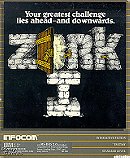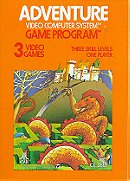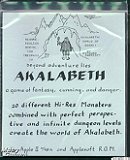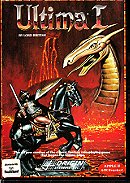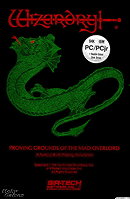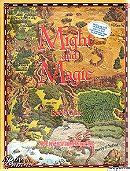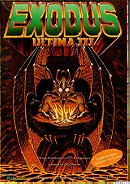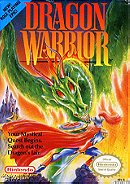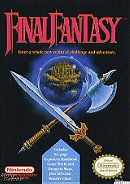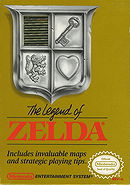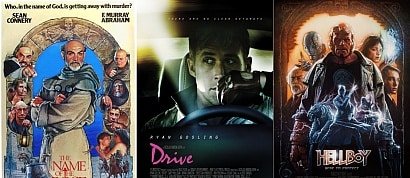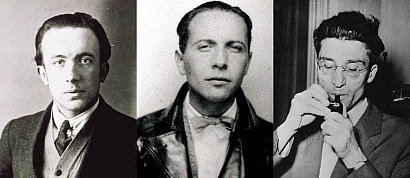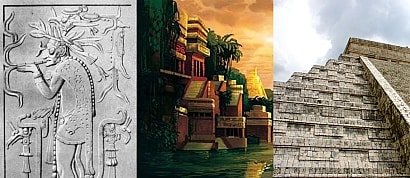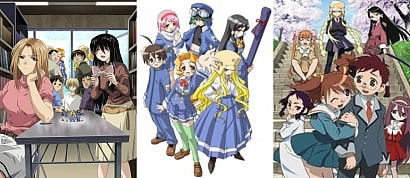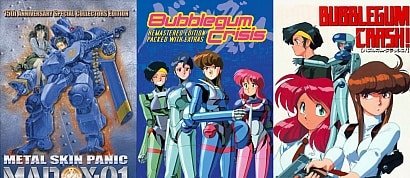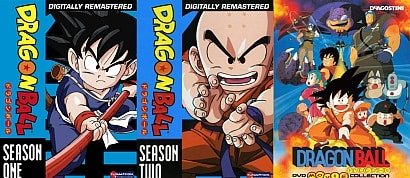The Complete History of RPGs
Sort by:
Showing 13 items
Rating:
List Type:
Yes, you can start tracing the roots of video game RPGs back to H.G. Wells! (The idea of "wargaming" actually goes back to ancient cultures of the East, starting with strategical miniature-based games like Chess, but we'll fast-forward from there a bit and save you a few thousand years of basic board gaming!)
In 1913, he wrote a rulebook for "playing war", now known as "wargaming", with toy soldiers. It was called "Little Wars", and introduced to the masses the idea of role-playing as an army and doing battle with other people using a complete set of rules.
This inspired many people to try their own hand at making similar kinds of games over the subsequent several decades, eventually spawning many war-based board games starting in the 1950's when the industry of producing board games came into popularity.
The most influential game designer in 1950's wargaming was Charles Roberts, who developed a historical board game in 1953 called "Tactics" (followed by the revised/improved "Tactics II"), which was widely played and specifically inspired the next pioneer on this list. It contained some of the first commercially manufactured miniatures, a tiled playing surface, a combat results table, etc., all of which went on to standard features of most wargames in the future.
In 1913, he wrote a rulebook for "playing war", now known as "wargaming", with toy soldiers. It was called "Little Wars", and introduced to the masses the idea of role-playing as an army and doing battle with other people using a complete set of rules.
This inspired many people to try their own hand at making similar kinds of games over the subsequent several decades, eventually spawning many war-based board games starting in the 1950's when the industry of producing board games came into popularity.
The most influential game designer in 1950's wargaming was Charles Roberts, who developed a historical board game in 1953 called "Tactics" (followed by the revised/improved "Tactics II"), which was widely played and specifically inspired the next pioneer on this list. It contained some of the first commercially manufactured miniatures, a tiled playing surface, a combat results table, etc., all of which went on to standard features of most wargames in the future.
Gary Gygax, a wargaming enthusiast, founded the International Federation of Wargamers (IFW) in 1967, joining together many independent groups of wargamers together into a single organization. This group held the first ever wargaming conference, "Gen Con", in the same year. It was very small, but historically important. (The conference, on a FAR more grandiose scale, is still held annually to this very day.)
He also co-founded the Castle & Crusade Society (CCS) in 1970 to focus more on medieval wargaming, and the following year released his first rule-based wargame called "Chainmail".
While working with Don Lowry, they wrote a small supplemental pamphlet to go with "Chainmail" that introduced rules for fantasy gameplay within the game, and the popularity of the idea eventually led to Gygax fully fleshing out that idea. That became the iconic game "Dungeons & Dragons" (D&D), which was first released in 1974.
D&D became a hit amongst not only wargamers but also people who liked fantasy fiction, as they now had a world and rules they could use to live out the fantastical lives they'd always fantasized. Many people across the country started forming groups to play, and this was especially influential to some of the first computer programmers, who used their coding skills to create primitive digital versions of this game.
The first of these original computer-based RPGs were coded on the PLATO computer system in early-to-mid 1975. PLATO was a very primitive computing network, mostly available at some lucky colleges. The first was the game "pedit5" by Rusty Rutherford, which was no more than an attempt at creating the D&D experience on the computer. It contained a single dungeon level, but included loot collection, casting spells, and a character save system. At the same time, in Illinois, Gary Whisenhunt & Ray Wood created "dnd", which was similar but also features some non-linear gameplay elements and particuarly difficult "boss" enemies.
In mid-1975, Don Daglow in California also coded what is likely the first RPG on the PDP-10 computer system, called "Dungeon", another D&D replica. This started the shift from PLATO games to PDP-10.
Will Crowther, a computer engineer at a VERY early pioneer networking contractor in Massachusetts, coded "Colossal Cave Adventure" (CCA) in 1976, which was the first ever interactive fiction computer game. This truly embodied the "role-playing" idea, as all of the elements of the game world were described to the player in detail, giving a sense of story and immersion that previous "D&D clone" games lacked. The first version of CCA was mostly geared towards being in an actual real world cave (as Will was very much into both caving and D&D in his personal life), however a local graduate student, Don Woods, soon revised CCA and added in many fantasy elements spawned from his love of Tolkien.
He also co-founded the Castle & Crusade Society (CCS) in 1970 to focus more on medieval wargaming, and the following year released his first rule-based wargame called "Chainmail".
While working with Don Lowry, they wrote a small supplemental pamphlet to go with "Chainmail" that introduced rules for fantasy gameplay within the game, and the popularity of the idea eventually led to Gygax fully fleshing out that idea. That became the iconic game "Dungeons & Dragons" (D&D), which was first released in 1974.
D&D became a hit amongst not only wargamers but also people who liked fantasy fiction, as they now had a world and rules they could use to live out the fantastical lives they'd always fantasized. Many people across the country started forming groups to play, and this was especially influential to some of the first computer programmers, who used their coding skills to create primitive digital versions of this game.
The first of these original computer-based RPGs were coded on the PLATO computer system in early-to-mid 1975. PLATO was a very primitive computing network, mostly available at some lucky colleges. The first was the game "pedit5" by Rusty Rutherford, which was no more than an attempt at creating the D&D experience on the computer. It contained a single dungeon level, but included loot collection, casting spells, and a character save system. At the same time, in Illinois, Gary Whisenhunt & Ray Wood created "dnd", which was similar but also features some non-linear gameplay elements and particuarly difficult "boss" enemies.
In mid-1975, Don Daglow in California also coded what is likely the first RPG on the PDP-10 computer system, called "Dungeon", another D&D replica. This started the shift from PLATO games to PDP-10.
Will Crowther, a computer engineer at a VERY early pioneer networking contractor in Massachusetts, coded "Colossal Cave Adventure" (CCA) in 1976, which was the first ever interactive fiction computer game. This truly embodied the "role-playing" idea, as all of the elements of the game world were described to the player in detail, giving a sense of story and immersion that previous "D&D clone" games lacked. The first version of CCA was mostly geared towards being in an actual real world cave (as Will was very much into both caving and D&D in his personal life), however a local graduate student, Don Woods, soon revised CCA and added in many fantasy elements spawned from his love of Tolkien.
Zork I: The Great Underground Empire - PC Games
As chance would have it, in mid-1977, three devs at MIT's Dynamic Modelling Group played CCA and were inspired to write their own similar game called "Zork", which focused more heavily on fantasy and dungeon crawling. It also contained much more sophistocated text commands, adding to its immersion.
Adventure - Atari 2600
In 1978, Warren Robinett played CCA at the Stanford AI Lab and had the idea to convert it into a graphical game, and spent the next year coding this idea. In 1979, Robinett's "Adventure" for Atari 2600 is released, the first ever graphical fantasy video game.
Akalabeth World Of Doom - PC Games
In mid-1979, Richard Garriott, then a high-schooler in Cambridge, MA, developed "Akalabeth: World of Doom" for Apple II, a graphical RPG containing wire-frame walls for navigating through mazes in a first-person perspective, with RPG elements that make it the first published graphical RPG.
A little under a year later in 1980, another important computer-based RPG was created for UNIX by Michael Toy & Glenn Wichman in California called "Rogue", which was a popular dungeon crawler with randomly generated levels and ASCII-based graphics. This game was again specifically inspired by a combination of D&D and having played CCA.
A little under a year later in 1980, another important computer-based RPG was created for UNIX by Michael Toy & Glenn Wichman in California called "Rogue", which was a popular dungeon crawler with randomly generated levels and ASCII-based graphics. This game was again specifically inspired by a combination of D&D and having played CCA.
Ultima I - (1980) - Apple II
In Late 1980-Mid 1981, Richard Garriott codes "Ultima I" for Apple II, being the first open-world computer game, as well as being on the first commercially available graphical RPGs. It had a fully graphical overworld, as well.
This game was released prior to the next game, "Wizardry", and maintained a healthy rivalry with that series over the coming years, releasing many improved sequels over time.
This game was released prior to the next game, "Wizardry", and maintained a healthy rivalry with that series over the coming years, releasing many improved sequels over time.
In 1981, Andrew Greenberg and Robert Woodhead (students at Cornell) released "Wizardry" for Apple II, a graphical fantasy RPG that featured a party-based system and colorized graphics. This game also introduced the series-standard first-person wireframe dungeon crawling graphics.
Although their styles were different, this became a direct competitor/compatriot to the Ultima series for many years to come, both series keeping up with each other by releasing new sequels on a frequent basis, pushing each other to develop new & improved game mechanics and systems.
Although their styles were different, this became a direct competitor/compatriot to the Ultima series for many years to come, both series keeping up with each other by releasing new sequels on a frequent basis, pushing each other to develop new & improved game mechanics and systems.
Might and Magic: Book One - PC Games
After several years of competing Ultima & Wizardy games, in 1986, Jon Van Caneghem coded a fantasy RPG called "Might & Magic Book One" for Apple II. It was praised for its large game world, wealth of items, non-linear play, and some more advanced background graphics.
This also spawned a long successful series which became more similar in style to Wizardry as opposed to Ultima.
This also spawned a long successful series which became more similar in style to Wizardry as opposed to Ultima.
Ultima III: Exodus - Commodore 64
Although it was actually originally released in 1983 for Apple II and Commodore 64, U3 became the first major home console fantasy RPG to be released in the West in February 1989 when it was ported to the Nintendo Entertainment System (NES).
This sequel was drastically different from U1 and U2, and it created the traditional completely graphical overworld + textual menu system that would be adopted and popularized by future games. This type of game would eventually be called a "Classic RPG", which is essentially a primitive form of what's now the "JRPG", a specific style created by the next two games on this list...
This sequel was drastically different from U1 and U2, and it created the traditional completely graphical overworld + textual menu system that would be adopted and popularized by future games. This type of game would eventually be called a "Classic RPG", which is essentially a primitive form of what's now the "JRPG", a specific style created by the next two games on this list...
Dragon Quest (JP) - Famicom and NES
In 1986, Enix released "Dragon Quest" for the Famicom in Japan, the first ever fully fleshed-out graphical fantasy RPG for home video game consoles vs. PC (when counting Japanese releases). It refined the CRPG formula found in U3 and built upon it greatly.
Dragon Warrior - Famicom and NES
It took until August 1989 for Dragon Quest to make its way West, eventually released for the NES in North America (approx. one year prior to Final Fantasy). It had to be renamed to "Dragon Warrior" due to another company already owning the copyright to the name "Dragon Quest" in the USA.
It was very popular in Japan but less so in Western markets, as it was one of the first RPG experiences many people had, so it took some time for the idea of the RPG to sink in with many Western gamers.
It was very popular in Japan but less so in Western markets, as it was one of the first RPG experiences many people had, so it took some time for the idea of the RPG to sink in with many Western gamers.
Final Fantasy - Famicom and NES
In 1987, Square released "Final Fantasy" for NES, which further iterates on the Ultima/Wizardry/DQ fantasy RPG formula, using a more intuitive and less textual-driven interface. This was the first graphical home console RPG to break through to mainstream popularity in Western video game markets (when it was finally released in NA in July 1990).
Some argue that FF became far more popular in the West because Dragon Warrior had already planted the ideas of the RPG game in Western gamers so they were already familiar with most of the concepts by the time FF launched. Others argue that it was more popular because it streamlined/simplified some of the previously menu-driven systems that DW contained. The truth is likely in between...
Some argue that FF became far more popular in the West because Dragon Warrior had already planted the ideas of the RPG game in Western gamers so they were already familiar with most of the concepts by the time FF launched. Others argue that it was more popular because it streamlined/simplified some of the previously menu-driven systems that DW contained. The truth is likely in between...
The Legend of Zelda - Famicom and NES
In August 1987, "The Legend of Zelda" by Nintendo was released and combined basic RPG elements with real-time side-scrolling action, utilizing little text or menus. It was arguably the first "Action RPG", which would later be expanded upon by game series like "Ys".
All of the games on this list contributed to the birth of the RPG as a viable video game genre, and from here the rest is history!
Most every other RPG on the NES was an attempt to mimic one of the three core RPGs on the system, either in the style of Ultima/DQ/FF (graphical overworld JRPG), Wizardry/M&M (text-based with wireframe inset graphics), or Zelda (basic & action-oriented).
RPGs on the SNES continued this tradition and expanded upon these same formulas, building bigger 2D game worlds with more complicated systems and better graphics. The rise of 3D gaming with systems like the Sega Saturn and Sony PlayStation gave rise to 3D-based games that still used the same ideas of experience points, loot, bosses, etc., but within a 3D world. This greatly increased the sense of immersion, and games like Final Fantasy VII & VIII revolutionized what was possible with the genre, launching gamers in the world of 3D RPG gameplay...which has since also been iterated to included even bigger, more complex, and more beautiful game worlds.
The next step in the evolution of the RPG is likely the advent of Virtual Reality technology, with the first truly VR headets scheduled for release on major home consoles in 2016. The future of immersion in the world of fantasy RPGs is bright indeed!
All of the games on this list contributed to the birth of the RPG as a viable video game genre, and from here the rest is history!
Most every other RPG on the NES was an attempt to mimic one of the three core RPGs on the system, either in the style of Ultima/DQ/FF (graphical overworld JRPG), Wizardry/M&M (text-based with wireframe inset graphics), or Zelda (basic & action-oriented).
RPGs on the SNES continued this tradition and expanded upon these same formulas, building bigger 2D game worlds with more complicated systems and better graphics. The rise of 3D gaming with systems like the Sega Saturn and Sony PlayStation gave rise to 3D-based games that still used the same ideas of experience points, loot, bosses, etc., but within a 3D world. This greatly increased the sense of immersion, and games like Final Fantasy VII & VIII revolutionized what was possible with the genre, launching gamers in the world of 3D RPG gameplay...which has since also been iterated to included even bigger, more complex, and more beautiful game worlds.
The next step in the evolution of the RPG is likely the advent of Virtual Reality technology, with the first truly VR headets scheduled for release on major home consoles in 2016. The future of immersion in the world of fantasy RPGs is bright indeed!
This list covers all of the games that contributed to bringing rise to the RPG genre of video games that exist today.
Added to
People who voted for this also voted for
...I shot a man in Reno, just to watch him die.
Games played in 2016
Music That Has Inspired My Writing
Parhaat leffat
Jonathan Rosenbaum: The Best Films of the 1940's
Favorite Surreal Films
Portuguese-language poets
Dream Log - May 12, 2016
Ron Perlman: Best, Awesomely, and Worst of
Games played - 2017
Spiritual Choices (religions and philosophies)
Krzysztof Kieslowski Ranked
Communist Poets
Films I want to buy
History Learning
Marilyn Manson: All Albums Ranked Best to Worst!
Genshiken: Viewing/Watch Order
Hellraiser: All Movies Ranked Best to Worst!
Trivium: All Albums Ranked Best to Worst!
Bubblegum Crisis: Viewing/Watch Order
Dragon Ball Franchise Viewing/Watch Order
Ernest P. Worrell: A Complete Viewing/Watch Order
 Login
Login

 70
70
 8.4
8.4
 0
0

